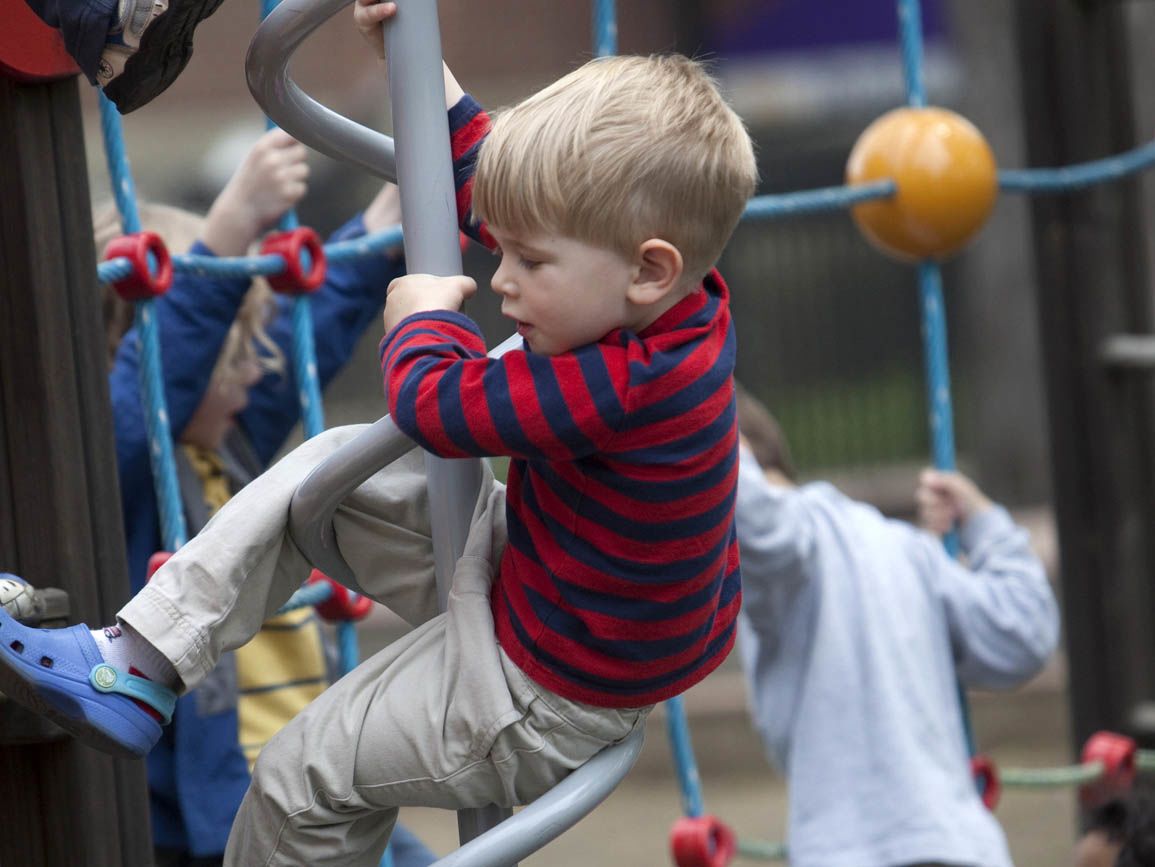A generation or two ago, summer meant children playing outdoors for long blocks of time. They built forts, climbed trees, and jumped off rocks. A skinned knee was one of the emblems of summer. Today, many neighborhoods are largely quiet. Children spend more time in structured activities, such as after-school programs, competitive sports, or dance lessons, leaving less opportunity for children to encounter healthy risks during playtime.
Yet, children’s need for free play hasn’t changed. Engaging in as much free play as possible builds confidence. Unstructured play also develops language, critical thinking, and problem solving, skills that carry over into adulthood, and creates a safe environment for healthy, developmentally appropriate risk-taking. For example, a child who goes around a corner too quickly on his bike learns a lot about velocity and speed. He learns how to safely make a turn, a necessary skill for an adult – or a teen – behind the wheel of a car. A child building a fort learns about using and caring for tools safely.
How to Create Opportunities for Risk-Taking in Children
At Bright Horizons, we believe wholeheartedly in the value of healthy risk and understand that play often creates the best scenario for children to test limits and build resilience in a safe way. We also know that many parents want to create more open, playful environments for their own children, as well. Below are four strategies for using play as an opportunity for healthy risk.
- Allow healthy risk-taking activities.
- Encourage open-ended play.
- Offer thoughtful supervision.
- Don’t overschedule.
Allow healthy risk-taking activities. As parents, we wish we could spare our children from every possible discomfort or danger, but this is an unrealistic goal. Growth and learning doesn’t come without some risk. Be objective about what the real, versus perceived, risks and potential benefits might be. Say yes whenever you can and offer appropriate guidance and boundaries. For example, let’s say that a child wants to climb a tree in the backyard. The child has strong motor and problem-solving skills. The tree is healthy and has low-lying, sturdy branches. The risks of climbing this tree are fairly small yet the benefits, in terms of confidence and independence, are large. This is a healthy risk. The parents decide to allow the child to climb the tree with a few caveats:
- Make sure a grown-up is nearby.
- Climb on the sturdy, lower limbs.
- Climb on limbs that have leaves (limbs without leaves may be dead and unstable).
This process can be applied to most childhood experiences. Gauge the child’s maturity and readiness against the potential risk, offer some training, analyze the results, and adjust, slowly offering the child more and more independence.
Encourage open-ended play. Create a space that invites pretend play. Offer open-ended materials, such as blocks, books, dress-up clothes, dolls, or cars. Keep paper and markers on hand for children to make signs and charts. Children can use natural materials, such as pine cones, smooth rocks, or sticks in play. Occasionally add an exciting and unexpected large prop to extend play. For example, a cardboard box can become a ship, a castle, or a house. Work with your children to find a system so that play materials can be cleaned up easily, but allow for messes during play.
Offer thoughtful supervision. While toddlers and young preschoolers want and need a loving adult to support and supervise play, older children often become self-conscious when an adult is too present. Think about play as a child’s world to be entered respectfully when invited. The rest of the time, it’s helpful for parents to keep an ear to the ground, but appear occupied with other things. When you do join the play, remember that you’re a guest, not the director. Express enthusiasm for children’s ideas, follow your child’s lead, and offer suggestions when asked. Don’t be afraid to be joyful or silly, but don’t take over.
Don’t overschedule. Over-involvement in extracurricular activities is one of the major time stealers for most American families. Take some time to examine your family priorities and your long-term goals. Do your family’s current extracurricular activities support or hinder those goals? Do they allow for “slow” time – opportunities for children to play, dream, and dawdle? Slow time is essential to children’s emotional and cognitive well-being. As parents, we should feel free to create a family culture that best nurtures our children’s growth and development by allowing our children to take healthy risks and empowers children to push appropriate boundaries, even if it means making changes to our schedules or going against popular trends.
- Many of the skills children will need as adults to compete in a global economy are not easily taught in a typical classroom setting. Discover how play offers ideal experiences for learning the 6 Cs.
- Children benefit greatly from open-ended playtime – not only physically, but socially and emotionally. Learn more about the advantages of free time outdoors for kids.
- Risky play can positively impact social health and self-esteem, and getting children involved in the kitchen can make them more open to healthy eating habits. Try these tips for showing your toddler how to use a knife safely.





